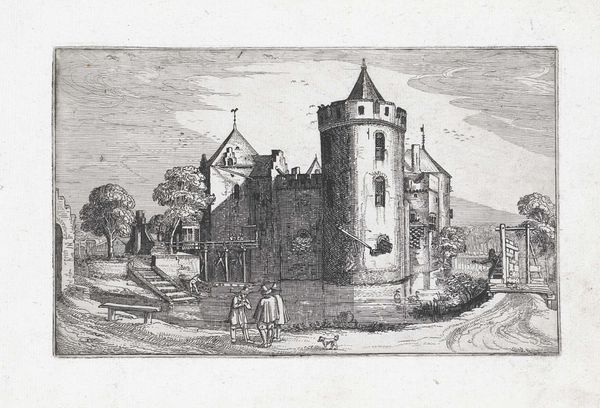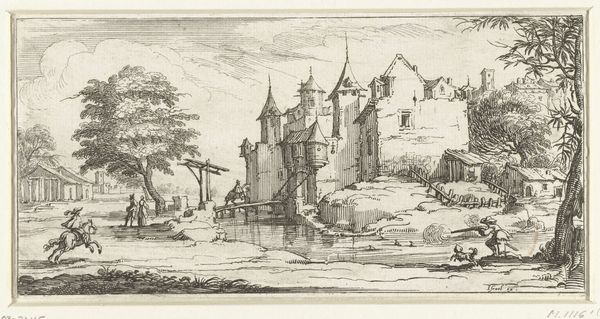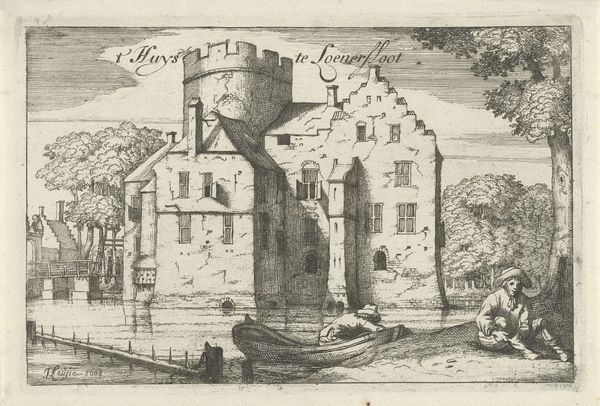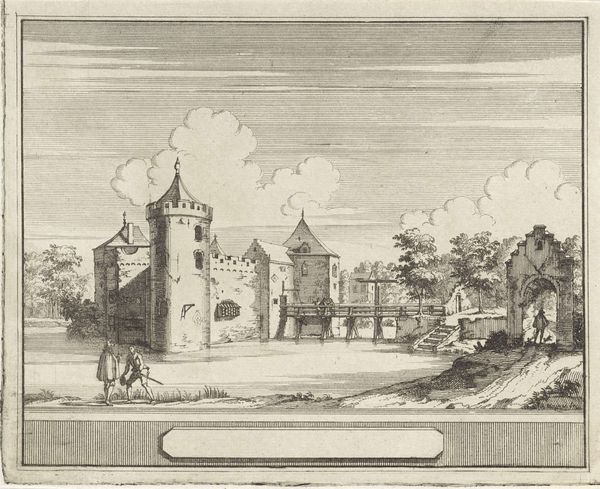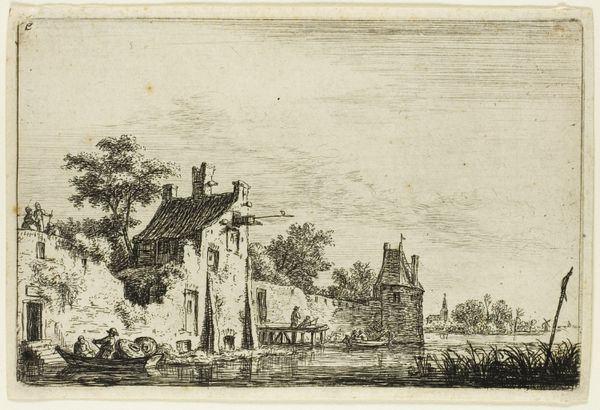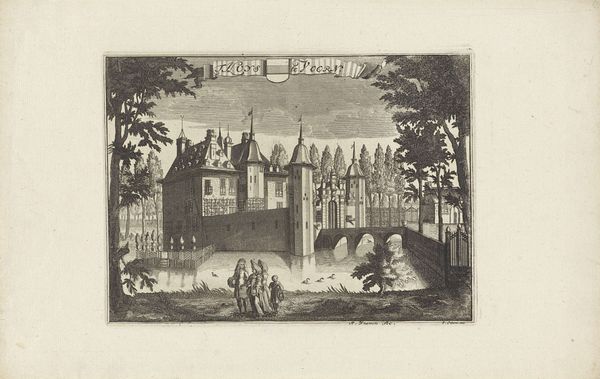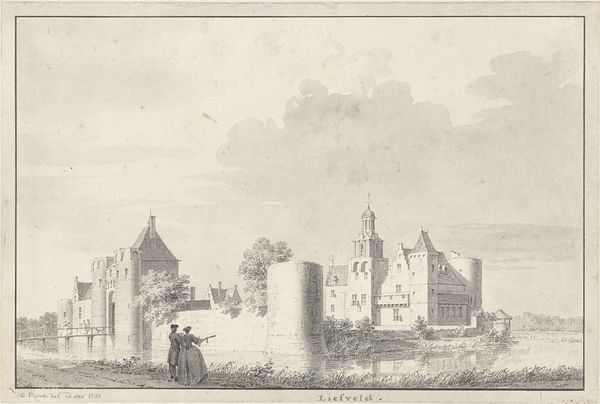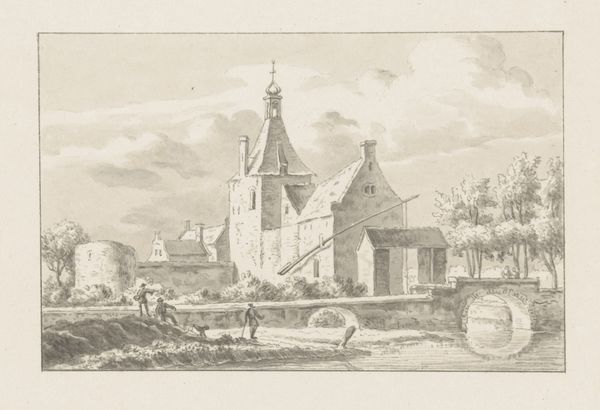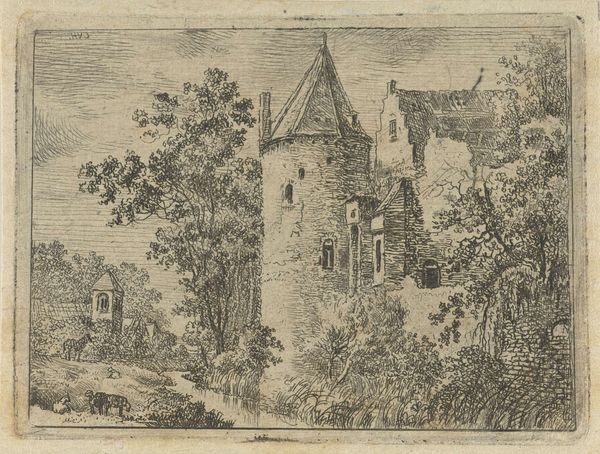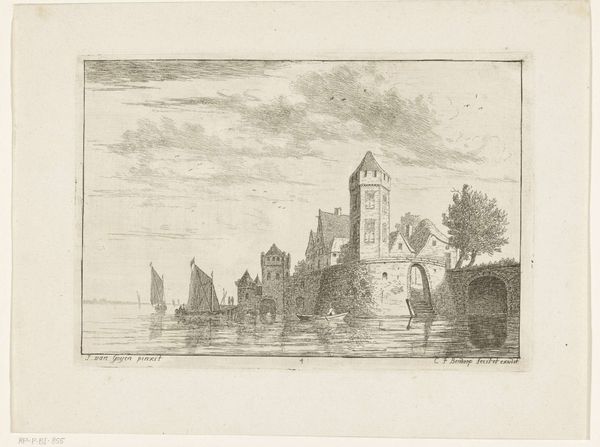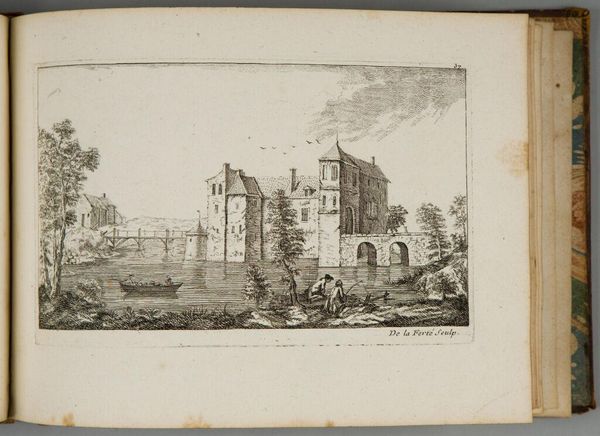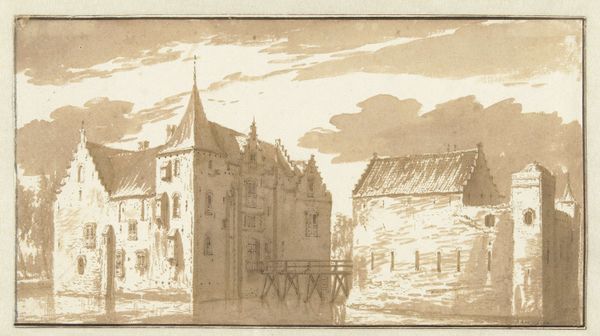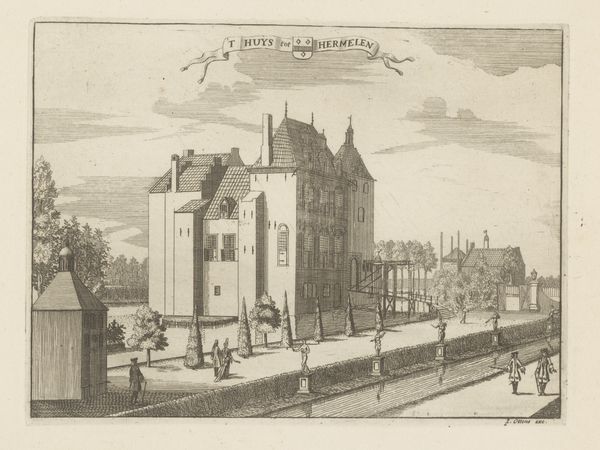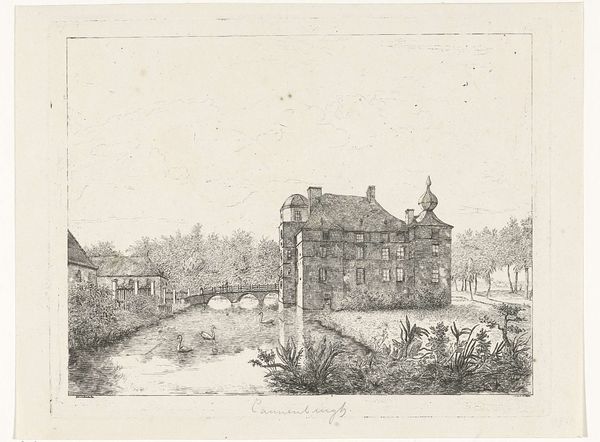
print, engraving
#
dutch-golden-age
# print
#
landscape
#
cityscape
#
engraving
Dimensions: height 122 mm, width 198 mm
Copyright: Rijks Museum: Open Domain
Curator: What strikes me immediately about this image is the incredible detail for such a small print. There’s an almost photographic quality in how light plays across the water. Editor: This is an engraving entitled "Slot te Muiden," dating roughly between 1596 and 1630, by Claes Jansz. Visscher. It is held here at the Rijksmuseum, and depicts the Muiden Castle near Amsterdam. I’m fascinated by how Visscher chooses to depict this imposing structure within a very specific social and historical moment. Curator: And those fine lines defining the stonework! One really gets a sense of the labor that goes into both building and depicting the castle. The material presence of the stone itself is practically tangible. What would it be like to have lived and worked building the structures or producing an image like this in that time period? Editor: Indeed. This work speaks to the shifting dynamics of power in the Dutch Republic. Castles were not only military structures, but powerful symbols of authority and changing cultural values. Their representation in print, circulated widely, served a crucial purpose in the shaping of national identity, contributing to a collective image of the landscape and its historical layers. How did Visscher's social standing inform his approach to depicting the castle and the landscape around it? Curator: We should consider Visscher’s workshop. The distribution network for these prints was probably robust. How accessible would this image have been to the average person? Would people buy them? Were these considered precious or utilitarian objects? This landscape is also part cityscape. Were there urban laborers and consumers? What was that relationship like with the people who inhabited this architectural structure and place? Editor: And, crucially, who consumed these images, and in what contexts? Was it hung in wealthy homes, bound into albums, or used as a form of proto-postcard? Considering this can illuminate the ways art functioned within the burgeoning Dutch economy. Curator: Examining the production of engravings like this really gets under the skin of what life in the Dutch Golden Age must have been like. What's compelling to me is thinking about all those artisans who put in labor and their craft to deliver a complex image of time and place. Editor: It serves as a reminder that even seemingly straightforward depictions of landscapes are deeply embedded in complex historical and social narratives. These artistic depictions acted as agents in defining and communicating Dutch identity to a wider public.
Comments
No comments
Be the first to comment and join the conversation on the ultimate creative platform.
